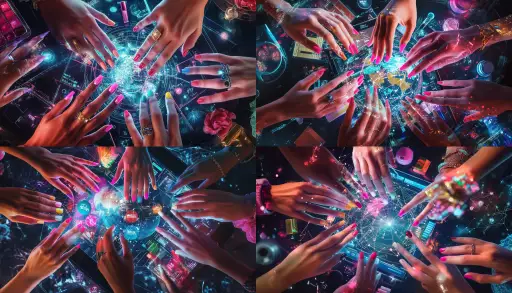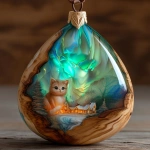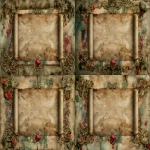Explore the Best AI Image Gallery

Beyond the Canvas: How AI-Generated Visual Content is Transforming Creativity
The realm of creativity is undergoing a seismic shift with the emergence of AI-generated visual content. From stunningly realistic images to imaginative artwork, Artificial Intelligence is now capable of producing visuals that were once thought to be exclusive to human imagination. This groundbreaking technology is not merely a novelty; its reshaping the creative landscape, offering exciting opportunities while simultaneously raising crucial ethical considerations.
A New Dawn for Creative Expression
AI-powered tools are democratizing creativity, empowering individuals without formal artistic training to generate compelling visuals. Imagine a world where anyone can conceptualize and create stunning artwork, design captivating marketing materials, or even produce realistic 3D models – all with the help of AI.
Applications Across Industries
- Marketing and Advertising: AI can generate eye-catching visuals for campaigns, personalize marketing materials, and create dynamic social media content.
- Design and Entertainment: From concept art for movies to architectural visualizations, AI is assisting designers and artists in bringing their visions to life.
- Education and Research: AI-generated visuals can enhance educational resources, create interactive simulations, and aid researchers in visualizing complex data.
The Ethical Dimensions of AI Creativity
While the potential of AI-generated visual content is undeniable, its crucial to address the ethical implications associated with this technology.
Copyright and Ownership
Questions arise regarding the ownership of AI-generated artwork. Who holds the copyright – the user who inputs the prompt, the developer of the AI algorithm, or the AI itself? This legal grey area requires careful consideration and clear guidelines.
Bias and Representation
AI algorithms are trained on vast datasets, which may contain inherent biases that reflect societal prejudices. This can result in AI-generated visuals perpetuating harmful stereotypes or misrepresenting certain groups. Its imperative to develop techniques to mitigate bias and ensure fair and equitable representation in AI-created content.
Transparency and Accountability
The decision-making processes of AI algorithms can be complex and opaque. Its crucial to strive for transparency in how AI generates visuals, allowing users to understand the factors influencing the output. This fosters trust and accountability in the use of this technology.
Looking Ahead: The Future of AI-Generated Visual Content
The field of AI-generated visual content is rapidly evolving. We can expect to see:
- More sophisticated and realistic visuals: Advancements in AI algorithms will lead to even more stunning and lifelike creations.
- Increased accessibility and user-friendliness: AI tools will become more intuitive and accessible to a wider range of users, empowering individuals with diverse skill sets.
- Integration into mainstream workflows: AI-generated visuals will seamlessly integrate into existing creative processes, enhancing efficiency and productivity.
- New artistic expressions and collaborations: AI will inspire new forms of art and foster collaborations between humans and machines, blurring the lines between creator and creation.
Conclusion
AI-generated visual content is poised to revolutionize the creative industry, offering unprecedented opportunities for expression, innovation, and collaboration. By embracing this transformative technology responsibly and addressing its ethical implications, we can unlock a future where creativity knows no bounds.




](https://images.ai-img.art/thumbnails/150/7599c9e7507c77a975081d554947c9dea123e678a7ece42d30f571f639620598.webp)

](https://images.ai-img.art/thumbnails/150/efd8a9ad06ef2c72e3378698ad5e592d3d2bf8eff85c25e75db7c9902c7be353.webp)


](https://images.ai-img.art/thumbnails/150/031692dcf8fbf869092e8cea50f9411a45dadc1f189ea67b8dece8e02952a7e3.webp)


